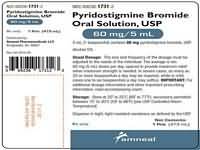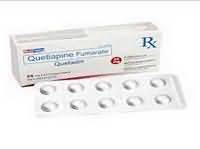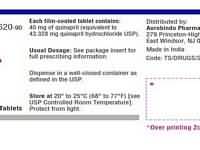Bicalutamide

Bicalutamide
CLINICAL USE
Treatment of prostate cancer
DOSE IN NORMAL RENAL FUNCTION
50–150 mg daily(with orchidectomy or gonadorelin therapy)
PHARMACOKINETICS
Molecular weight :430.4 %Protein binding :96 %Excreted unchanged in urine : approx 50 Volume of distribution (L/kg) :No datahalf-life – normal/ESRD (hrs) :6–7 days/Unchanged DOSE IN RENAL IMPAIRMENT
GFR (mL/MIN)
20 to 50 : Dose as in normal renal function 10 to 20 : Dose as in normal renal function <10 : Dose as in normal renal function DOSE IN PATIENTS UNDERGOING RENAL REPLACEMENT THERAPIES
CAPD :Unlikely to be dialysed. Dose as in normal renal function HD :Unlikely to be dialysed. Dose as in normal renal functionHDF/high flux :Unknown dialysability. Dose as in normal renal functionCAV/VVHD :Unlikely to be dialysed. Dose as in normal renal function IMPORTANT DRUG INTERACTIONS
Potentially hazardous interactions with other drugsCisapride: avoid concomitant use See ‘Other Information’ ADMINISTRATION
Reconstition
– Route
Oral Rate of Administration
–Comments
– OTHER INFORMATION
In vitro studies have shown that bicalutamide is an inhibitor of CYP450 3A4. For drugs eliminated by this route, e.g. ciclosporin, tacrolimus, sirolimus, it is recommended that plasma concentrations and clinical condition be monitored following initiation or cessation of bicalutamide therapy
See how to identify renal failure stages according to GFR calculation
See how to diagnose irreversible renal disease
Home









